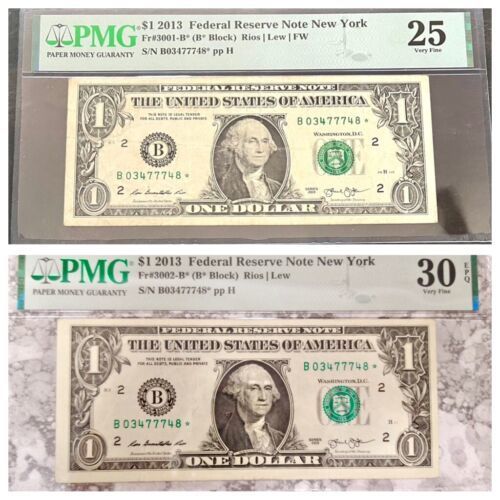#Dollar #Bill #Duplicates #WorthPoint
In the currency collector’s space, there’s been quite the buzz recently about a printing error made by the Bureau of Engraving and Printing that resulted in several million one-dollar bills having matching serial numbers. Typically, every dollar bill has a unique serial number. There are not supposed to be two bills with the same number; however, mistakes happen, and experts estimate that there could be up to 6.4 million pairs of these misnumbered bills.
How It Started
The United States government prints dollar bills at two facilities, in Washington, DC, and Fort Worth, Texas. Because of an error in a print run, certain bills have duplicate serial numbers, and these are the ones collectors are trying to find and match.
The problem was discovered around 2016–2017. A collector noticed a discrepancy in the Bureau of Engraving and Printing’s public records and notified the government. At first, the BEP was not forthcoming; however, after the collector submitted a Freedom of Information Act (FOIA) request, the Bureau admitted the mistake.
The notes are from print runs in 2014 and 2016, the first bills in Washington, DC, and their matching counterparts in Fort Worth. Initially, a website called “The Zegers/Winograd Project” sprung up to connect collectors who might have one half of a matching pair. Another website, Project 2013B, is now a clearinghouse for duplicate bills and shows a confirmed match as recently as June 8, 2024, as of the time of writing.
How It’s Going
While news reports put the value of a pair of bills as high as $150,000, there are no verified sales at that level. Coin World reported on a few sales, but the information is limited and difficult to verify. The notes were last printed in 2017, and the “lifespan” of the average dollar bill is just under four years because of wear and tear and damage to bills. When a bill is too torn or worn to use, the U.S. Treasury has a process to destroy those notes, so as time goes on, it will be more challenging to find them “in the wild.”
How Do You Know If You Have One?
The Project 2013B submission page has a comprehensive checklist of what to look for on these bills. It’s a particular combination of serial numbers from a specific range and series date. The bills in question must include a star at the end of the serial number.
Have you found a bill in this range? If so, check the WorthPoint Price Guide for up-to-date sales information and prices.
Related Articles:
Brenda Kelley Kim lives in the Boston area. She is the author of Sink or Swim: Tales From the Deep End of Everywhere and writes a weekly syndicated column for The Marblehead Weekly News/Essex Media Group. When not writing or walking her snorty pug, Penny, she enjoys yard sales, flea markets, and badminton.
WorthPoint—Discover. Value. Preserve.




